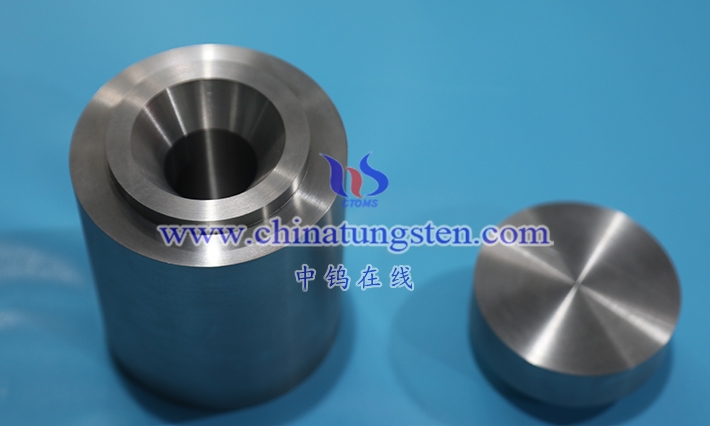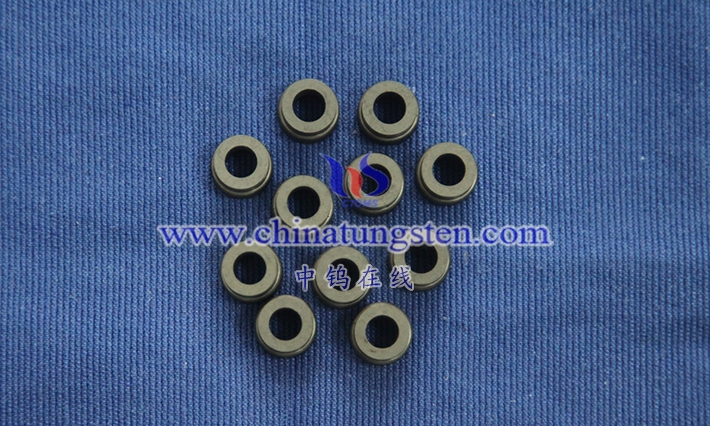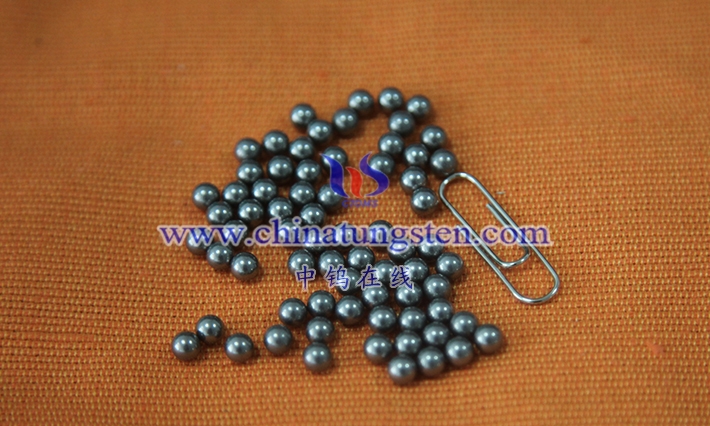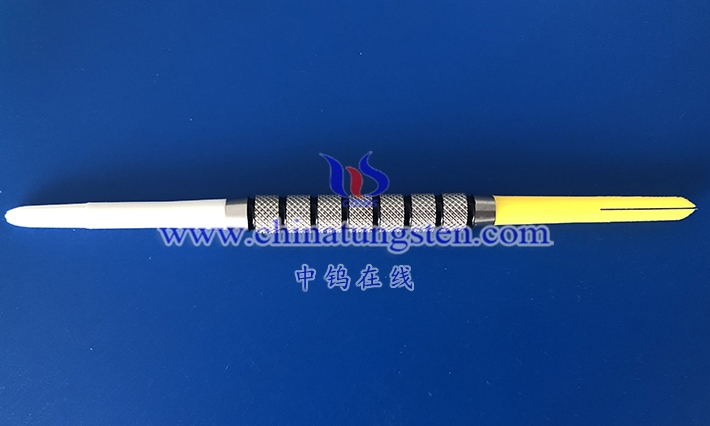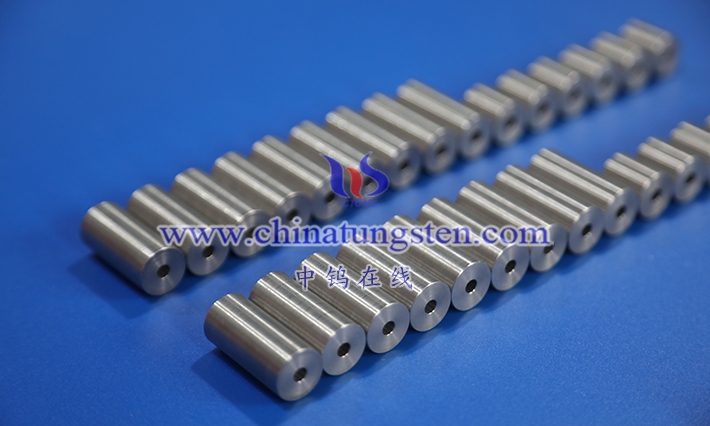
Preface
As a functional material with excellent performance, tungsten carbide powder (WC) has become a cornerstone material in modern industry and cutting-edge technology with its hardness up to HV 2000-2500, wear resistance 10-20 times better than traditional steel, and melting point up to 2870°C. Its hexagonal crystal structure (lattice constant a=2.906 Å , c=2.837 Å ) and high density (15.63 g/cm³ ) give it unparalleled mechanical strength and chemical stability, making it show irreplaceable application value in cemented carbide manufacturing, surface coating technology, mining tools, electronic energy, aerospace and even biomedical fields.
From the sharp edges of industrial knives to the high-temperature resistant coatings of aircraft engines, from the efficient catalysts of fuel cells to the precision molds of 3D printing, tungsten carbide powder is continuously pushing the boundaries of material science and the innovation of industrial technology with its versatility and high performance.
The discovery and application history of tungsten carbide powder can be traced back to the tungsten chemical research in the late 19th century. In 1893, French chemist Henri Moissan first synthesized tungsten carbide through high-temperature carburization reaction, but it was only a laboratory product at that time and had no industrial application.
The real breakthrough occurred in the 1920s , when German metallurgist Karl Schröter discovered that sintering tungsten carbide powder with cobalt (Co) powder (1450-1600°C, 10-20 MPa) could produce cemented carbide with a hardness close to that of diamond (HV 1500-1800) while studying tungsten-based hard materials. This invention was patented by Osram in Germany in 1923, and industrialized in 1926 by Rheinmetall in Germany for the manufacture of cutting tools. Subsequently, tungsten carbide cemented carbide entered the market under the brand name “Widia” (German for “Wie Diamant”, meaning “like diamond”), quickly replacing traditional high-speed steel and ushering in the era of cemented carbide. China’s research on tungsten carbide powder began in the 1950s. In 1958, Zhuzhou Cemented Carbide Factory successfully trial-produced the first batch of WC-Co cemented carbide, filling the domestic gap. Since then, relying on China’s abundant tungsten resources (accounting for about 60% of the world’s reserves, data source: USGS 2023), the application of tungsten carbide powder has rapidly expanded in China’s industry, covering fields such as machinery manufacturing, mining and national defense.
Entering the 21st century, with the rise of nanotechnology, surface engineering and intelligent manufacturing, the application field of tungsten carbide powder has been further broadened. According to the data of CTIA GROUP in 2023, the global annual demand for tungsten carbide powder has exceeded 60,000 tons, and the market size is expected to exceed US$5 billion by 2030, with an average annual growth rate of about 6.5%. Its production process has evolved from the traditional high-temperature carbonization method (1800-2000°C, carbonization time 2-4 hours) to chemical vapor deposition (CVD, deposition rate 0.1-1 μm /min), mechanical alloying (ball milling time 20-50 hours, grain size <50 nm) and other advanced technologies. The particle size has been reduced from micron level (1-5 μm ) to nanometer level (<100 nm), and the specific surface area has been increased to 20-50 m² / g, which has significantly enhanced the performance and application potential of the material.
As the author of this book, CTIA GROUP LTD ( CTIA GROUP ) and Chinatungsten Online ( China Tungsten Online ) were founded in 1997 and are headquartered in Xiamen, China. They are high-tech enterprises focusing on the research and development, production and sales of tungsten products. With a deep insight into China’s tungsten industry and more than 20 years of technical accumulation, we are committed to promoting the innovation and application of tungsten carbide powder. We deeply feel that the systematic combing of tungsten carbide powder in the current technical literature is still insufficient, especially the lack of comprehensive integration from basic science to cutting-edge applications. To this end, this book aims to provide academic researchers, industrial practitioners and technical developers with an authoritative, detailed and practical reference material to help readers deeply understand the characteristics, production process, analysis technology and diversified applications of tungsten carbide powder, and at the same time provide scientific basis and practical guidance for future technological breakthroughs. This book is not only a summary of theoretical knowledge, but also the crystallization of our many years of practical experience in the field of tungsten carbide powder .
The target readers of this book include: researchers in the field of materials science and engineering, who are concerned with the microstructure (grain size 10-50 nm) and performance optimization (such as fracture toughness > 15 MPa·m ¹ / ² ) of tungsten carbide powder; engineers in the metallurgical, mechanical manufacturing and mining industries, who are looking for solutions to improve tool life (wear resistance increased by 5-10 times) and efficiency; practitioners in the electronics, energy and biomedical fields, who are exploring the application of tungsten carbide powder in conductive coatings (resistivity <10 ⁻⁵ Ω·cm ), catalyst carriers (specific surface area>50 m² / g), and students and technicians interested in materials technology who want to systematically master the core knowledge in this field. In addition, this book also provides insights into industry trends for corporate decision makers and market analysts, such as global demand forecasts and technology development directions.
In terms of writing methods, this book adopts a multidisciplinary perspective, integrating the latest achievements of materials science, chemical engineering, mechanical manufacturing and applied physics. In terms of content structure, Chapters 1 to 3 introduce the basic characteristics, production process and microstructure analysis of tungsten carbide powder (such as XRD peak position 2θ=35.6° corresponds to WC(100) crystal plane); Chapter 4, as the focus of the book, discusses its application in cemented carbide (hardness HV 1500-2000), surface coating (bonding strength>70 MPa), mining tools (impact toughness>25 J/cm ² ) and other fields in detail, down to specific scenarios and technical data; Chapters 5 to 6 focus on quality control (such as particle size distribution RSD<5%), standards and performance optimization (such as doping Co to improve toughness); Chapters 7 to 8 focus on environmental impact (such as dust emission<10 mg/m ³ ), safety considerations and market trends; Chapter 9 provides a glossary and resource support; the appendix supplements microanalysis (SEM/TEM resolution<1 nm), particle size standards and specification comparisons. The book extensively quotes international standards (such as ISO 4499-2:2020, ASTM B430-19), domestic specifications (such as GB/T 4295-2008) and the latest literature (such as the 2023 paper in Journal of Materials Science), and is supplemented by experimental data, microscopic images and case analyses to ensure the scientificity and practicality of the content.
In the wave of global green development, the application prospects of tungsten carbide powder are becoming more and more broad. CTIA GROUP hopes to provide readers with comprehensive technical references and innovative inspirations through this book. We thank the China Tungsten Industry Association , the Institute of Materials of the Chinese Academy of Sciences, and the International Tungsten Industry Association (ITIA) for their support, and look forward to readers’ valuable comments to continuously improve this book.
CTIA GROUP LTD
April 2025
Xiamen, China
Table of Contents
Preface
Importance and Research Background of Tungsten Carbide Powder
Objectives and Audience of This Book
Writing Method and Content Overview
Chapter 1: Introduction to Tungsten Carbide Powder
1.1 Definition and chemical composition
1.2 Historical development
1.3 Basic physical and chemical properties
1.4 Classification of tungsten carbide powder
Chapter 2: Production Process of Tungsten Carbide Powder
2.1 Raw material preparation
2.2 Traditional carbonization method
2.3 Chemical vapor deposition (CVD) method
2.4 Mechanical alloying method
2.5 Other emerging technologies
2.6 Post-processing technology
Chapter 3: Microstructure and Characterization Technology of Tungsten Carbide Powder
3.1 Microstructure characteristics
3.2 Characterization methods
3.3 Chemical composition analysis
3.4 Physical properties test
Chapter 4: Application fields of tungsten carbide powder (key chapters)
Overview
The versatility and application value of tungsten carbide powder
Chapter Structure and Research Methods
Data Source and Case Analysis
4.1 Cemented Carbide Manufacturing
4.1.1 Cutting tools
4.1.1.1 Turning tools and milling cutters
WC-Co formula (cobalt content 6%-12%) and cutting performance Data: Cutting speed increased by 50% (compared to high-speed steel, >200 m/min) Case: Automobile engine cylinder block processing (lifespan > 100,000 pieces)
4.1.1.2 Drill bits and boring tools
micron-grade WC powder (1-3 μm) in deep hole processing Performance: Hardness HV 1600, chipping resistance >12 MPa·m1/2Technology: Multi-layer WC-TiC coated drill (wear resistance increased by 3 times)
4.1.1.3 Special cutting tools
PCB micro drill (diameter < 0.1 mm) and superhard material processing tools Sintering process (1450°C, HIP) of nano WC powder (<100 nm) Case: Aviation composite material processing (accuracy ±0.005 mm)
4.1.2 Wear-resistant parts
4.1.2.1 Stamping Dies
Application of WC-based dies in cold stamping steel plates Data: Lifespan > 500,000 times (5 times higher than Cr12MoV) Technology: WC-Co sintering (1500°C, 30 MPa)
4.1.2.2 Wire drawing die and extrusion die
fine WC powder (0.5-1 μm) in copper wire drawing Performance: Surface roughness Ra <0.02 μm, wear rate <0.001 mm³/N·m Case: Wire drawing die in cable industry (continuous operation > 6 months)
4.1.2.3 Wear-resistant bearings and seals
Application of WC-Ni composite materials in high-speed bearings Data: Friction coefficient <0.1, temperature resistance >800°C Technology: Hot Isostatic Pressing (HIP) Process Optimization
4.1.3 Precision machining tools
4.1.3.1 Dental and medical tools
Micromachining of WC powder on dental drill bits (diameter 0.3-1 mm) Properties: Hardness HV 1800, biocompatibility (ISO 10993-5) Case: Dental surgery drill (durability > 1000 times)
4.1.3.2 Optical mold
Application of Ultrafine WC Powder in Glass Lens Moulds Data: Surface accuracy <10 nm, lifespan >100,000 times of die pressing Technology: Mirror polishing combined with WC coating
4.2 Surface Coating Technology
4.2.1 Thermal spray coating
4.2.1.1 HVOF spraying
Application of WC-Co powder (10%-12% Co) in wear-resistant coating Data: coating hardness HV 1200-1400, wear rate <0.01 mm³/N·m Case: Aircraft engine blades (lifespan > 3000 hours)
4.2.1.2 Flame spraying
Application of WC-Ni powder in low-cost wear-resistant coating Performance: Bonding strength >50 MPa, thickness 100-300 μm Case: Agricultural machinery blades (wear resistance increased by 4 times)
4.2.2 Plasma spraying and laser cladding
4.2.2.1 Plasma spraying
WC-Cr3C2 composite coating in high temperature corrosion resistance Data: Oxidation resistance >1000°C, porosity <2% Case: Gas turbine blades (operating > 5000 hours)
4.2.2.2 Laser cladding
Strengthening of the Surface of Oil Drilling Tools with WC Powder Performance: coating thickness 0.5-2 mm, hardness HV 1300 Case: Deep-sea drill pipe (corrosion resistance life > 2 years)
4.2.3 High temperature resistance and special coating
4.2.3.1 Thermal shock resistant coating
Application of WC-based coatings in high-temperature molds Data: Thermal expansion coefficient <5×10-6/°C, temperature resistance >1200°C Technology: WC-TiC-Ni composite coating
4.2.3.2 Chemical resistant coating
Corrosion resistance of WC-CoCr coating in chemical pipelines Case: Valves in acidic environments (lifespan > 3 years)
4.3 Mining and Construction Tools
4.3.1 Rock drilling tools
4.3.1.1 Hard rock drill bits
Application of WC inlaid drill bits in granite mining Data: Impact toughness >25 J/cm², drilling speed >12 m/h Case: Mine blasting drilling (lifespan > 1000 m)
4.3.1.2 Coal seam drilling tools
WC-Co cutter head in coal mine excavation Performance: Hardness HV 1500, wear resistance <0.002 mm³/N·m Technology: WC-TiC composite strengthening
4.3.2 Shield cutters and tunneling equipment
4.3.2.1 Metro shield cutterhead
Application of WC-based cutting tools in sandstone formations Data: Cutting life > 6000 m, wear resistance increased by 2 times Case: Urban tunnel project (replacement cycle > 1 year)
4.3.2.2 Hard ground tunneling cutter
WC-TiC tools in basalt Performance: Fracture toughness >15 MPa·m1/2Technology: Sintering optimization of superhard WC powder
4.3.3 Wear-resistant lining and crushing equipment
4.3.3.1 Ball mill lining
Application of WC reinforced liner in ore grinding Data: Wear rate <0.05 g/t, life span >2 years Case: Iron ore processing (30% efficiency improvement)
4.3.3.2 Crusher hammer
Wear resistance of WC-Co hammer in limestone crushing Performance: Impact life > 100,000 times
4.4 Electronics and Energy Field
4.4.1 Conductive coating and electrode materials
4.4.1.1 Fuel cell electrodes
Electrical conductivity of WC powder in PEM fuel cells Data: Resistivity <10-5 Ω·cm, cycle stability >10,000 times Technology: PVD deposition of WC thin film
4.4.1.2 Lithium battery current collector
Durability of WC coating on aluminum foil Performance: Adhesion >20 N/cm, corrosion resistance increased by 2 times Case: Electric vehicle battery (capacity retention rate > 90%)
4.4.2 Catalyst carrier
4.4.2.1 Hydrogen fuel catalysis
Application of Nano-WC Powder (<50 nm) in Water Electrolysis Data: Catalytic activity >95% (compared to Pt/C) Technology: WC-Pt composite catalyst
4.4.2.2 Chemical Catalysis
Stability of WC-based supports in ammonia synthesis Performance: Temperature resistance >600°C, lifespan >5000 hours
4.4.3 Energy Storage and Thermal Management
4.4.3.1 Supercapacitor
Specific capacity of WC-based electrode materials (>250 F/g) Data: Cycle life > 8000 times Case: New energy storage system
4.4.3.2 Thermal Management Coating
Application of WC heat dissipation coating in LED Performance: Thermal conductivity >120 W/m·K
4.5 Aerospace and Military Applications
4.5.1 Turbine blades and nozzles
4.5.1.1 Aircraft engine blades
Application of WC-Co coating in high temperature wear resistance Data: Temperature resistance >1300°C, lifespan >4000 hours Case: Turbofan engine (thrust efficiency increased by 5%)
4.5.1.2 Rocket Nozzle
Application of WC-based heat-resistant coating in solid rockets Performance: Ablation resistance <0.01 mm/s
4.5.2 Armor materials
4.5.2.1 Tank Armor
Anti-ballistic performance of WC ceramic composite armor Data: Hardness >2200 HV, penetration resistance >1200 m/s Case: Main battle tank protection (thickness <50 mm)
4.5.2.2 Bulletproof vest plug-in
Application of lightweight WC substrate Performance: Weight <2 kg/m², protection level NIJ IV
4.5.3 Spacecraft wear-resistant parts
4.5.3.1 Onboard machinery
Wear resistance of WC coatings in satellite joints Data: Friction coefficient <0.05, life span >10 years Technology: Vacuum PVD process
4.6 Other Emerging Applications
4.6.1 3D Printing and Additive Manufacturing
4.6.1.1 Metal Parts Printing
Application of WC-Co powder in SLM (Selective Laser Melting) Data: Density >99%, accuracy ±0.02 mm Case: Rapid prototyping of aviation parts
4.6.1.2 Mould manufacturing
Advantages of Nano WC Powder in 3D Printing Molds Performance: Surface hardness HV 2000
4.6.2 Biomedical Materials
4.6.2.1 Orthopedic implants
Wear resistance of WC coating in hip joint Data: Wear rate <0.001 mm³/N·m, cell survival rate >98% Technology: WC-Ti composite coating
4.6.2.2 Dental restorations
WC-based materials in dental crowns Performance: Fracture strength >1000 MPa
4.6.3 Intelligent Manufacturing and Sensors
4.6.3.1 High temperature sensor
Stability of WC powder in industrial sensors Data: Temperature resistance > 1000°C, response time < 1 ms Case: Steelmaking furnace monitoring
4.7 Application Cases and Data Analysis
4.7.1 Industry Application Summary Table
Data comparison in the fields of cemented carbide, coating, mining, electronics, etc.
4.7.2 Performance Comparison Analysis
Key indicators such as hardness, wear resistance, life span, etc. (compared with traditional materials)
4.7.3 Successful Case Studies
Global enterprise application examples (such as Sandvik, Kennametal)
4.8 Future Application Prospects
4.8.1 Potential in emerging fields
Quantum computing cooling components Flexible electronic conductive layer
4.8.2 Technical Challenges and Solutions
Improvement of the Dispersion of Nano-WC Powder Improved stability of high temperature coatings
4.8.3 Market Forecast
Demand growth rate in 2030 >6%, analysis of key areas
Chapter 5: Quality Control and Standards of Tungsten Carbide Powder
5.1 Key points of quality control
5.2 International standards
5.3 Domestic standards
5.4 Standard comparison and applicability
Chapter 6: Performance Optimization and Modification of Tungsten Carbide Powder
6.1 Particle size optimization
6.2 Doping and composite modification
6.3 Surface modification technology
6.4 Heat treatment and annealing
Chapter 7: Environmental and Safety Considerations of Tungsten Carbide Powder
7.1 Environmental impact during production
7.2 Safety operation specifications
7.3 Recycling and recycling
Chapter 8: Market and Development Trend of Tungsten Carbide Powder
8.1 Global Market Overview
8.2 Technology Development Trends
8.3 Future Application Outlook
Chapter 9: Terminology, Standards and Resources
9.1 Glossary of terms related to tungsten carbide powder
9.2 References and standards
9.3 Recommended resources
Appendix
Appendix A: Microstructure and performance analysis of tungsten carbide powder
Appendix B: Particle size and preparation parameter standards of tungsten carbide powder
Appendix C: Comparison of international and domestic standards related to tungsten carbide powder
Read more: Tungsten Carbide Powder (TCP ) Physical & Chemical Properties, Preparation, & Applications
Customized R&D and Production of Tungsten, Molybdenum Products
Chinatungsten Online and CTIA GROUP LTD have been working in the tungsten industry for nearly 30 years, specializing in flexible customization of tungsten and molybdenum products worldwide, which are tungsten and molybdenum design, R&D, production, and overall solution integrators with high visibility and credibility worldwide.
Chinatungsten Online and CTIA GROUP LTD provide products mainly including: tungsten oxide products, such as tungstates such as APT/WO3; tungsten powder and tungsten carbide powder; tungsten metal products such as tungsten wire, tungsten ball, tungsten bar, tungsten electrode, etc.; high-density alloy products, such as dart rods, fishing sinkers, automotive tungsten crankshaft counterweights, mobile phones, clocks and watches, tungsten alloy shielding materials for radioactive medical equipment, etc.; tungsten silver and tungsten copper products for electronic appliances. Cemented carbide products include cutting tools such as cutting, grinding, milling, drilling, planing, wear-resistant parts, nozzles, spheres, anti-skid spikes, molds, structural parts, seals, bearings, high-pressure and high-temperature resistant cavities, top hammers, and other standard and customized high-hardness, high-strength, strong acid and alkali resistant high-performance products. Molybdenum products include molybdenum oxide, molybdenum powder, molybdenum and alloy sintering materials, molybdenum crucibles, molybdenum boats, TZM, TZC, molybdenum wires, molybdenum heating belts, molybdenum spouts, molybdenum copper, molybdenum tungsten alloys, molybdenum sputtering targets, sapphire single crystal furnace components, etc.
For more information about tungsten chemical products please visit the website: tungsten-powder.com
If you are interested in related products, please contact us:
Email: sales@chinatungsten.com
Tel: +86 592 5129696 / 86 592 5129595
